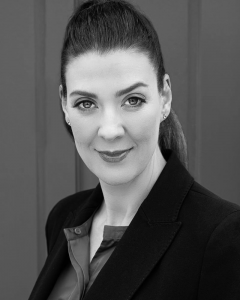Register here for the Aged Care Taskforce Recommendations Webinar on 26 March.
In a significant development for Australia’s aged care sector, the Aged Care Taskforce recently unveiled its Final Report, comprising 23 recommendations aimed at reshaping the fees and funding arrangements governing aged care. While there has been a lot of coverage of the official Recommendations, the devil is in the detail. In the Aged Care Taskforce report there are a number of unofficial recommendations that could cost you substantially more for aged care. There is also a pivotal question that the report doesn’t answer.
Among the recommendations that didn’t make it on to the official list of 23 is an immediate and increase in the Refundable Accommodation Deposit (RAD) price threshold of $200,000 to $750,000 from its current level of $550,000. The reports says “The Taskforce consider implementing the prior recommendation from the Tune review is a prudent first step … The Tune Review in 2017 recommended an immediate increase to $750,000 and indexation over time.”
Presently, aged care facilities must obtain approval for RADs exceeding $550,000, effectively setting the benchmark for most beds at this price point. This small but significant change could take effect as early as July 1st, with the anticipated introduction of the new Aged Care Act and could see the price of many beds increase by $200,000 as a lump sum or around $16,500 a year for those who elect to pay their accommodation cost by Daily Payment.
Adding this to the official recommendation from the Taskforce of imposing a 3% per annum levy on Refundable Accommodation Deposits (RADs), capped at 15% would see the cost of the levy go from $16,500, culminating in a deduction of $82,500 over five years on a RAD of $550,000 to an annual deduction of $22,500, amounting to $112,500 on a $750,000 RAD.
Presently, the government shoulders 94% of residential aged care costs ($13 billion), with residents contributing 6% ($800 million) through means-tested care fees. In contemplating strategies for individual contributions to aged care costs, the Taskforce considered that the government could assume all care-related expenses, with individuals only responsible for accommodation and living expenses. While not explicitly recommending the removal of current caps on means-tested care fees, the Taskforce suggested that the government might consider such a measure if it opts against fully funding care. Currently the amount you can contribute towards your cost of care is capped at a daily amount of $415 with an annual cap of $32,700 and a lifetime limit (across home care and residential aged care) of $78,500. Removing the annual and lifetime caps could see someone paying more than $151,000 per year in means tested care fees, almost 5 times more.
The initial response to the Aged Care Taskforce Final Report has, on the whole, been very positive – after all, how could the media or the public disagree with the very simple premise that “Wealthy Australians should pay more for their Aged Care”? But who are these “wealthy Australians”? In the current means testing arrangements to be considered wealthy you simply need to have assets above $197,735. This relatively low benchmark of wealth creates what I call “aged care no man’s land” for people with $200,000 or $300,000 needing to pay $550,000 for their aged care accommodation.
The Taskforce didn’t provide details on the means testing for aged care, rather it hinted at a tiered approach based on pension qualification (full pension, part pension and self funded) and homeownership for those moving into residential aged care. The Taskforce also raised the prospect of aligning aged care means testing with pension arrangements which could see significant implications for carers and close relatives of aged care recipients, who could lose the ability to exempt the home they live in. Currently the home is an exempt asset while a “protected person” lives there and is included in your aged care assessable assets up to a capped value of $197,735 when it is assessed.
Ultimately, the funding of aged care in Australia hinges on a binary equation: how much should the government bear the burden (through taxpayer funds) versus how much should individuals foot the bill. As the government deliberates over which recommendations to adopt, it appears inevitable that the cost of aged care will go up. Ensuring that the higher price equates to better care is crucial, so is ensuring that there is equitable access and that aged care is affordable.
If you need a financial adviser to help you navigate the cost of aged care, choose a Retirement Living and Aged Care Specialist.








